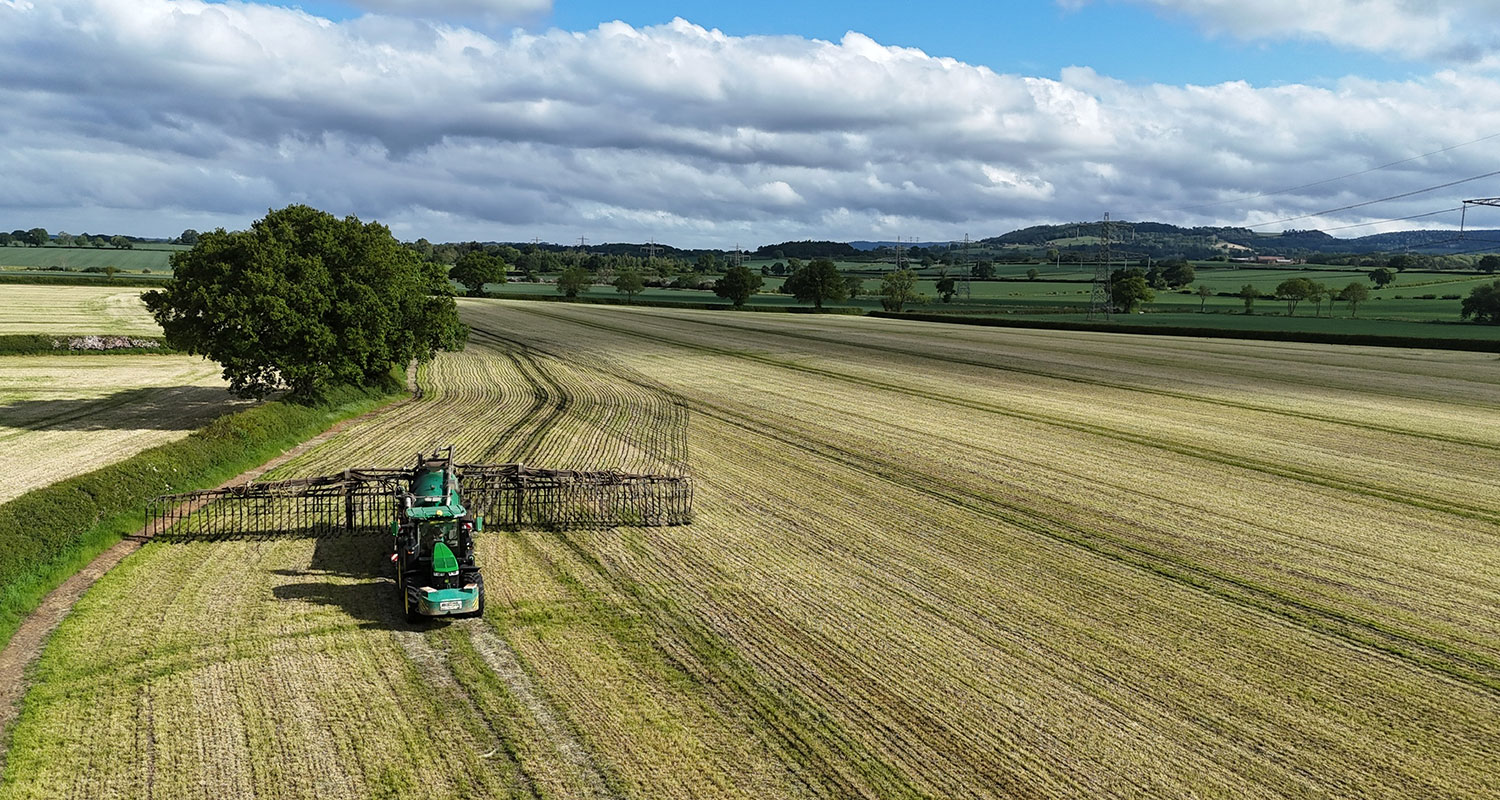When cutting silage, you should ensure that slurry hasn’t been spread in the past six to eight weeks in order to allow the levels of harmful clostridia bacteria to drop to safe levels. If you cut silage before enough time has passed, it may affect the fermentation process of the silage.
Slurry Spreading
Send us a message

Slurry plays a vital role in the majority of farming, especially if you rear cattle and sheep. It enables proper land cultivation, ensuring your soil and pasture is nutrient-rich, providing your livestock with a healthy, natural food source.
What is Slurry?
Put simply, farm slurry is a mixture of water and cow manure. Farmers then spread the slurry mixture over their land as a natural fertiliser, enriching the soil with essential nutrients to encourage the growth of crops.
The term ‘slurry’ can actually be used to describe three different elements:
- Spreadable slurry
- Dirty Water
- Farmyard Manure (FYM)
Slurry is made up of actual animal waste or excreta, collected from a yard or farm building. The waste is washed into vats along with any bedding and rainwater, then held in slurry storage tanks until the farmer is ready to begin spreading using a gravity-fed slurry spreader.
AWSM is one of the UK’s leading suppliers of slurry storage tanks. Find out more about our storage solutions here.
Dirty water, which is also considered as slurry, is run-off from a concrete yard that is only lightly contaminated. This is stored separately from the slurry farmers would use to fertilise their crops. Whereas FYM (farmyard manure) is solid animal waste that can be swept and stacked in a heap – not mixed with water for muck spreading.
DEFRA, the Department for Agriculture and Rural Affairs, define ‘slurry’ as all three of the above, but only the spreadable kind is used by farmers across the UK to enrich their soil.
What are the Benefits of Slurry Spreading?
One of the key ingredients in slurry is nitrogen, this is the substance that makes it so useful for growing crops. This is the first major benefit; by enriching your soil through muck spreading, your crop yield will increase. When applied to grass, this can result in happier, healthier livestock.
The second major benefit is cost-saving. Whilst storage tanks do present an initial outlay, they will last for years to come. Buying manufactured fertiliser, particularly at scale, represents a significant cost. By collecting, storing and spreading your own slurry, you can save yourself a fortune in the long term.
When Should I Spread Slurry?
There needs to be crop growth in order to utilise the nutrients contained within slurry, which is why spreading at the right time of year and under the appropriate conditions is essential. The most effective way to make the best use of your slurry and manures is by spreading during the growing season, as the window for growth is restricted. This outlines the importance of maximising the storage capabilities on your farm, especially as winter approaches.
Depending on the type of land you farm, there are designated ‘closed’ periods, where muck spreading is strictly prohibited in order to minimise the release of nitrates into the watercourse. Whether your land use is for tillage or purely grassland, or whether your soil type is shallow, sandy or clay-based – the closed period ranges from mid-October to the end of January.
Understanding how nutrient-rich the soil on your land actually is plays an important role in slurry spreading.
AWSM offers a professional soil sampling service that can help you to ascertain what your soil may be missing. Perfect for small to medium sized holdings, head to our designated page to find out more.
As well as spreading at the right time of year, it is equally important to remember to only spread slurry under the appropriate conditions. You must not spread any organic manure:
- When heavy rain is forecast
- On waterlogged ground
- Ground liable to flooding
- Snow-covered or frozen ground
- Steeply sloped ground
Assistance With Slurry Spreading on Your Farm
The rules and regulations around spreading are plentiful, as well as this, knowing the optimal time of year to start slurry spreading comes with knowledge and experience. If you’re looking for assistance with slurry spreading, AWSM offers a range of farm contracting services to help in the busy runnings of farm life.
Whether you’re looking for machinery and plant-hire, or for external farm-staff to come and work your land for you – AWSM has the capabilities to do so. For more information on our slurry spreading solutions, get in touch with us today.
How to spread slurry with umbilical?
Using an umbilical in spreading involves pumping slurry from a storage facility via a pipeline to a tractor mounted applicator unit. Once everything is connected, and the umbilical pipe has been laid, the applicator and pump are started, and the tractor drives across the field, spreading slurry.
Is spreading slurry illegal?
While some regulations apply to where and how much slurry can be spread, on the whole, it’s a legal and beneficial activity, providing nutrients to crops and disposing of excess slurry. DEFRA has provided a best practices guide which can be accessed here.





